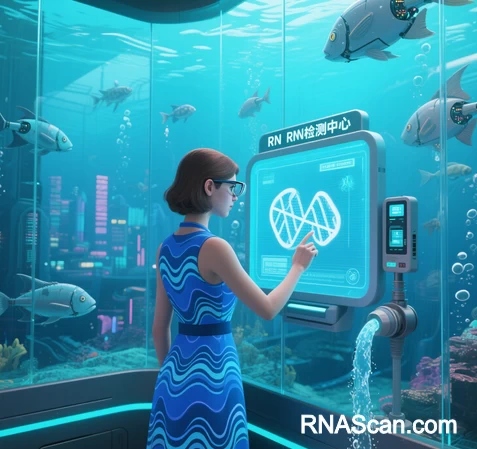 Introduction
Introduction
While conventional RNA sequencing (RNA-seq) provides a comprehensive snapshot of the transcriptome, RNAScan represents a specialized suite of technologies designed for precision-targeted analysis of specific RNA sequences, structures, and interactions. This article delineates the fundamental distinctions between these approaches, highlighting their unique workflows, applications, and technological innovations.
1. Core Principles and Objectives
A. Conventional RNA-seq
- Goal: Global transcriptome profiling to quantify gene expression, detect novel isoforms, and identify non-coding RNAs across all genes.
- Workflow: Converts all RNA (mRNA, lncRNA, rRNA) to cDNA, followed by untargeted high-throughput sequencing.
- Output: Genome-wide expression matrix (e.g., FPKM/TPM values) for differential expression analysis.
B. RNAScan
- Goal: Focused analysis of specific targets (e.g., fusion genes, RNA-protein interactions, structural motifs) with ultra-sensitivity.
- Workflow: Employs Unique Molecular Indexing (UMI) and hybrid capture probes to enrich predefined targets before sequencing.
- Output: Quantitative data for selected sequences (e.g., fusion junctions, mutation impacts) with minimal background noise.
Suggested Figure: Side-by-side workflow comparison: RNA-seq (total RNA → cDNA → sequencing) vs. RNAScan (RNA → UMI tagging → probe capture → sequencing).
2. Workflow and Technology
A. Library Preparation
| Step | Conventional RNA-seq | RNAScan |
|---|---|---|
| RNA Input | Total RNA (including rRNA) | Any RNA type (prioritizes low-abundance targets) |
| Barcoding | Sample-level indexes | UMI tagging per molecule for error correction |
| Enrichment | Poly-A selection/rRNA depletion | Hybrid capture with biotinylated probes |
| Amplification Bias | High (PCR duplicates common) | Low (UMIs remove duplicates) |
B. Sequencing and Analysis
- RNA-seq: Requires 20–100 million reads/sample for differential expression; uses aligners (STAR, HISAT2) and quantifiers (Salmon, Kallisto).
- RNAScan: Sequences only enriched targets (≤10% of transcriptome); uses specialized pipelines (e.g., CLC Genomics) for fusion detection or structural scanning.
Suggested Figure: Data analysis divergence: RNA-seq (alignment → expression matrix → DESeq2) vs. RNAScan (UMI deduplication → junction alignment → fusion calling).
3. Key Applications
A. Conventional RNA-seq
- Transcriptome Exploration: De novo assembly for non-model organisms.
- Differential Expression: Identifying expression changes across conditions (e.g., cancer vs. normal).
- Isoform Discovery: Detecting novel splicing variants.
B. RNAScan
- Fusion Gene Detection: Identifies oncogenic fusions (e.g., NTRK, KMT2A-PTD) at 0.1% allele frequency with 99% specificity.
- RNA-Protein Interaction Analysis: Uses FoldX RNAScan to quantify binding energy changes (ΔΔG) for mutations.
- Structural Motif Scanning: Predicts conserved RNA structures via probabilistic modeling (e.g., morrislab/rnascan).
Suggested Figure: Clinical application contrast: RNA-seq (tumor transcriptome profiling) vs. RNAScan (fusion detection in leukemia).
4. Performance Metrics
| Parameter | Conventional RNA-seq | RNAScan |
|---|---|---|
| Sensitivity | Moderate (limited for rare targets) | Ultra-high (detects fusions at ≤0.1% frequency) |
| Sample Input | 100 ng – 1 μg RNA | 10 ng RNA (due to enrichment) |
| Turnaround Time | Days to weeks | 9-hour workflow (QIAGEN panels) |
| Cost per Target | Low (broad coverage) | High (focused on premium targets) |
5. Technological Innovations
A. RNAScan-Specific Advances
- UMI-Based Digital Sequencing: Eliminates PCR biases, enabling absolute RNA quantification.
- Hybrid Capture Probes: Customizable panels for oncology, virology, or synthetic biology.
- Integrated AI Tools: Predicts RNA mutation impacts (e.g., FoldX ΔΔG) without wet-lab experiments.
B. RNA-seq Evolution
- Single-Cell RNA-seq: Resolves cellular heterogeneity but lacks RNAScan’s sensitivity for rare variants.
- Long-Read Sequencing: Improves isoform resolution but remains untargeted.
Suggested Figure: Innovation timeline: RNA-seq (2008) → scRNA-seq (2013) → RNAScan (2020s).
6. Future Convergence
Emerging hybrids (e.g., Single-Cell RNAScan) will combine single-cell resolution with targeted sensitivity, enabling:
- Rare tumor subclone fusion detection.
- In situ RNA structure profiling in specific cell types.
- CRISPR-guided RNA editing validation.
Conclusion
Conventional RNA-seq and RNAScan address fundamentally distinct biological questions:
- RNA-seq is the microscope for transcriptome-wide exploration, ideal for hypothesis-free discovery.
- RNAScan is the laser for precision targeting, delivering clinical-grade sensitivity for predefined biomarkers.
While RNA-seq illuminates the forest, RNAScan examines individual trees with atomic-level detail. Their synergy—powered by UMIs, AI, and CRISPR—will redefine precision genomics in the coming decade.
Data Source: Publicly available references.
Contact: chuanchuan810@gmail.com




